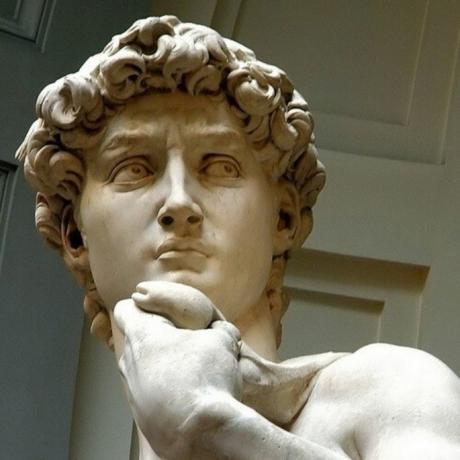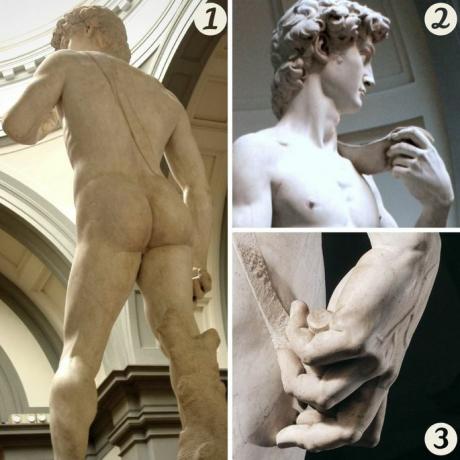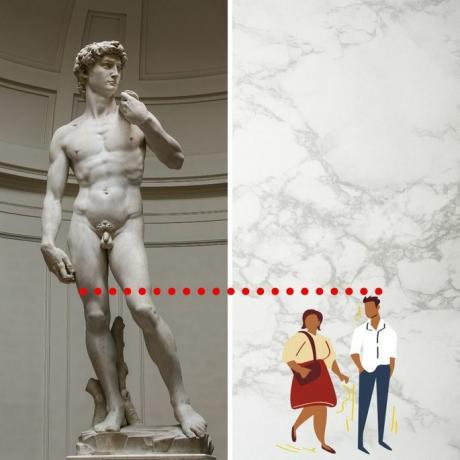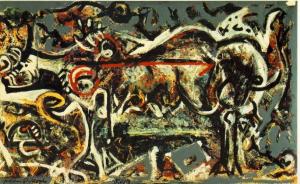Analysis of the sculpture David by Michelangelo
The sculpture David It was made by the Florentine artist Miguel Ángel Buonarroti between 1501 and 1504, when the young man was not in his thirties. The subject had already been treated by sculptors such as Verrocchio, Ghiberti and Donatello, but Michelangelo was the first to fix his attention, not on David's triumph, but on the previous instant.
Michelangelo focused his attention on man and his human qualities, those same virtues that would allow him to face the threat of a giant. Not for nothing, the David Michelangelo's became a symbol of the Italian Renaissance.
At 5.17 meters high and 5.5 tons in weight, the sculpture was commissioned by the Opera del Duomo for the Cathedral of Santa Maria del Fiore in Florence. But both its size and its quality made it go to the Piazza della Signoria, where it was until the 19th century. Currently the David is located in the Galleria dell’Accademia in Florence, Italy.
Analysis and characteristics of the sculpture David by Michelangelo

David represents the biblical David who faces and defeats the giant Goliath with only a few stones and his intelligence. Then he would become King David. How does Michelangelo represent it? What does the David of Michelangelo in his hands?
In this sculpture, a muscular David is depicted upright just before combat. He rests his left hand on his shoulder, and in it he carries his sling bag. From there, a kind of harness hugs his back to his right hand, next to his thigh. This hand hides what could be a whip, that is, a shaft sling, in common use among the Romans. Let's see its main characteristics below.
1. It is a round lump sculpture
David by Miguel Ángel is a free-standing or round sculpture, which means that it has been conceived to be appreciated from all sides.
2. The figure stands in contrapposto
David lies in perfect contrapposto. Is named contrapposto to a standing position with one leg supporting the full body weight while the other leg is relaxed. This classic pose causes the figure's hips and shoulders to rest at opposite angles and causes the torso to make a small S-curve.
The position of contrapposto from David helps the balance of the piece. The tension of the right leg and the left arm forms a counterbalance with the relaxed muscles of the left arm and leg.
3. Simultaneously represents tension and relaxation
The dichotomy between tension and relaxation of the body arises as a support for the emotional conflict between rest and the intrinsic action of alertness, that is, being prepared for any action.
David it can be summarized as an action at rest. The muscular and emotional tension are perfect for Michelangelo to show his perfect knowledge of the male body and his ability to balance the physical and the emotional in a single figure.
4. Expressive face

The face of David he has a challenging gaze impregnated with strength where the consciousness of power is manifested, in the broadest sense of the word. He is able to intuit the enemy showing full self-confidence, a virtue highly appreciated by the Renaissance man.
In each block of marble I see a statue as clear as if it were placed in front of me, fit and finished with attitude and action. I just have to carve out the rough walls that imprison the precious apparition to reveal other eyes as I see them with my own.
Miguel Ángel Buonarroti.
5. Unusual proportions

Michelangelo used unusual techniques of proportions. At first glance it looks like a statue of perfect proportions, but in reality the right hand and the head next to the neck are expressively older.
His right hand is supported by the relaxed right arm. It is a perfectly sculpted, delicate and harmonious hand. But if it is measured with respect to the body, it shows its disproportion.
The disproportionate large head next to David's thick strained neck are more than half the size of the sculpture's chest / torso, but it doesn't seem obvious at first glance.
Michelangelo is said to have intentionally sculpted these disproportions for two reasons: first, for the visual effect from below. The second, to underline the way to win a great battle: with concentration and intelligence; represented by the head, and with weighting in the action; represented by her hand.
6. Monumental material

David It is a sculpture made from a single block of white marble quarried from the Carrara Mountains, famous for the high quality of its marble.
The block of white marble underwent interventions by three different artists over several years. This caused fractures and perforations in the block.
In 1501, 25 years after the last intervention, the authorities of the Opera del Duomo commissioned Michelangelo with the monumental work of a David for the Cathedral of Florence.
When I returned, I found that he was famous. The city council asked me to remove a colossal David from a block of marble, damaged! Almost twenty feet.
Michelangelo, after the creation of Piedad.
What does the David of Michelangelo?
David it had been a subject already explored by great artists like Verrocchio, Ghiberti and Donatello, but the composition was always a David after the battle, triumphant. The genius of Michelangelo resides in the creation of his David without action but with the imminence of such, that is, human intelligence over brute physical force.
The sculptor chooses that moment prior to the fight, where the greatest mental concentration takes place, which implies that there is rest but also tension. Youth is balanced with human intelligence and divine wisdom.
A Renaissance Ideal: From Religion to Philosophy
Miguel Ángel manages to synthesize the meaning of the figure of David in the context of culture Judeo-Christian, while managing to synchronize it with Renaissance values that emphasize balance and weighting.
To suppress the representation of the giant Goliath in the scene implied directing the attention totally to nature human and her virtues, with which a beardless young man could overcome the brute force of a being "dehumanized".
The message is clear: what matters is human virtue, those that make David a qualitatively human being. Not force. On the other hand, yes, intelligence, the weighting of actions and the elevation of the spirit. Finally, the concern for his people and the commitment to his people.
This explains, in part, why Michelangelo's David became a symbol of the Renaissance. Indeed, the triumph of intelligence and virtue over force embodies the values of the anthropocentric humanism of that historical context.
A political reading of the David
The Florentines also gave these questions a political interpretation. The work had been done a few years after a great historical moment in Florence.
Indeed, in the year 1494, Florence rose up against the Medici, whose highest representative, Pedro II de Medici, heir to Lorenzo the Magnificent, had capitulated to Charles' French army VIII. The terms of that capitulation had outraged the Florentines.
They then expelled the Medici and created the Second Republic of Florence. Thus, the impressive work of Michelangelo, which summed up the humanistic greatness of that polis, heir to Dante, Giotto and Brunelleschi, became also a symbol of the struggle of the Florentine Republic against the leaders and adjacent states of the time: the Medici and the States pontifical.
Reaction to the revelation of the sculpture David
When the sculpture David was revealed in 1504 in front of the members of the sacristy who had made the order, it caused such astonishment that they considered it too perfect to continue with the original idea of putting it in the Cathedral.
To decide where to place the new Renaissance masterpiece, they created a committee of 30 members, including artists of the caliber of Leonardo da Vinci and Sandro Botticelli, to decide their new box.
The statue was then placed in the political heart of Florence, in the Piazza della Signoria, opposite the entrance to the Palazzo Vecchio, where it stood until 1873.
It is currently housed in the Accademia Gallery (Galleria dell´Accademia) in Florence, the most important museum in the city after the Uffizi Gallery.
Pope Giulio II (Julius II in Spanish) commissions the Sistine Chapel from Michelangelo after the thunderous success of David.
See also other works by Michelangelo:
- 9 works that show the incomparable genius of Michelangelo
- Sculpture La Piedad
- Adan creation
- Sculpture of Moses



